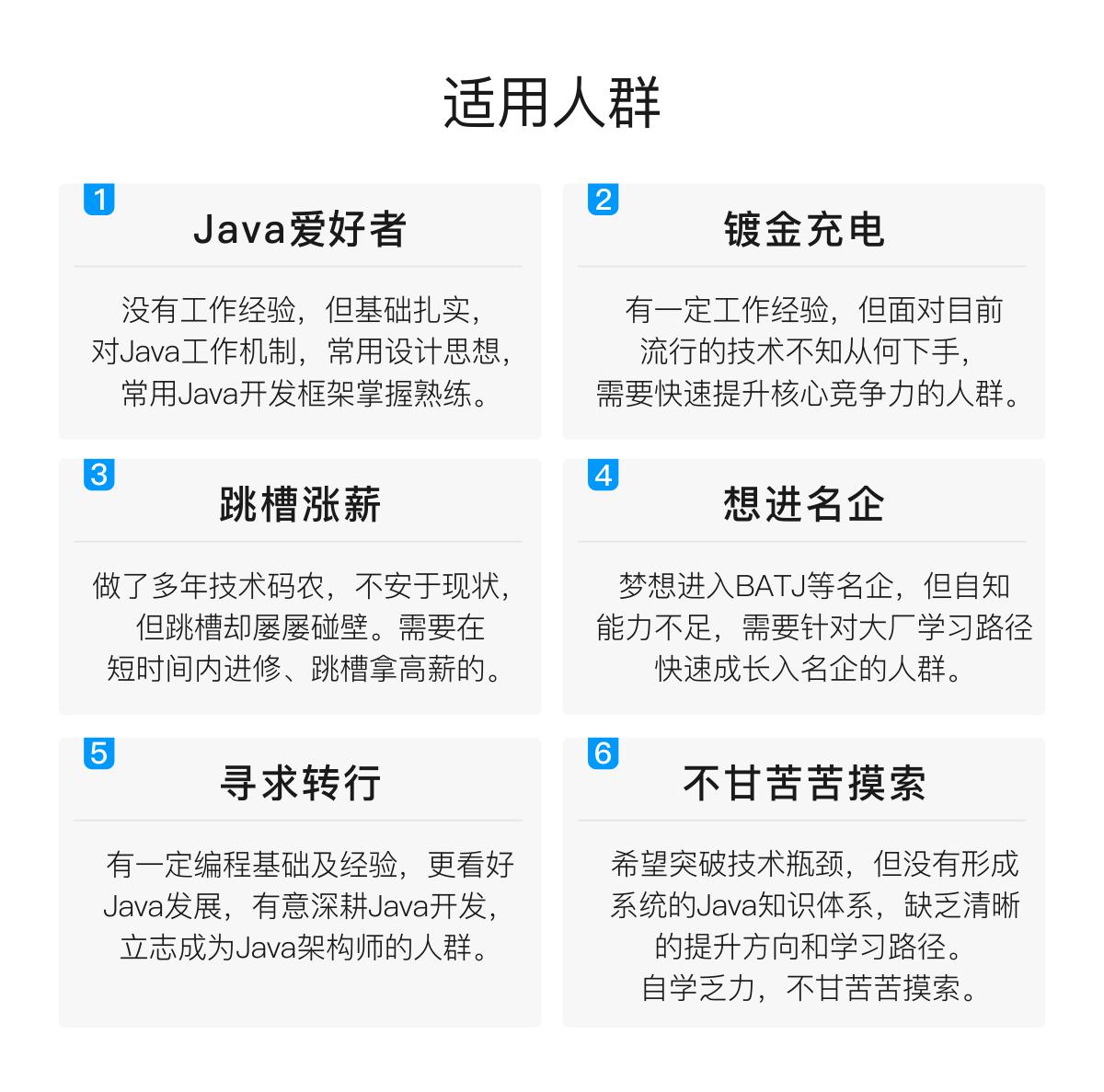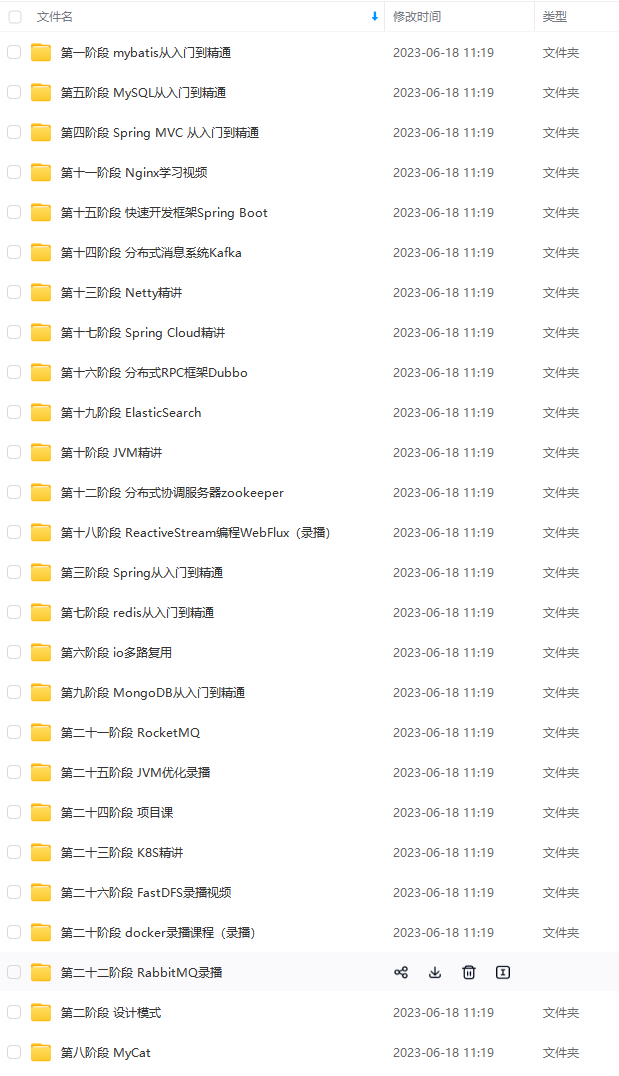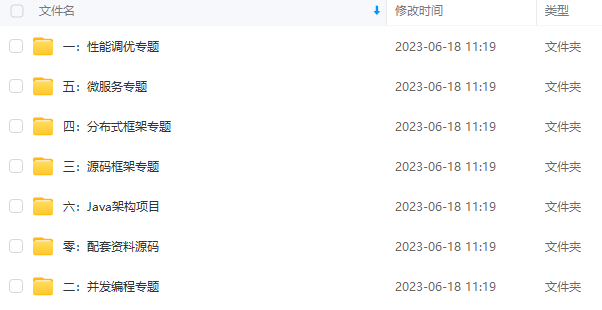输出结果:
8
9
Process finished with exit code 0
聚合(max/min/count)
max 、 min 、 count 这些字眼你一定不陌生,没错,在mysql中我们常用它们进行数据统计。Java stream中也引入了这些概念和用法,极大地方便了我们对集合、数组的数据统计工作。
案例一:获取 String 集合中最长的元素。
public class StreamTest {
public static void main(String[] args) {
List list = Arrays.asList(“adnm”, “admmt”, “pot”, “xbangd”, “weoujgsd”);
Optional max = list.stream().max(Comparator.comparing(String::length));
System.out.println(“最长的字符串:” + max.get());
}
}
输出结果:
最长的字符串:weoujgsd
Process finished with exit code 0
案例二:获取 Integer 集合中的最大值。
public class StreamTest {
public static void main(String[] args) {
List list = Arrays.asList(7, 6, 9, 4, 11, 6);
// 自然排序
Optional max = list.stream().max(Integer::compareTo);
// 自定义排序
Optional max2 = list.stream().max(new Comparator() {
@Override
public int compare(Integer o1, Integer o2) {
return o1.compareTo(o2);
}
});
System.out.println(“自然排序的最大值:” + max.get());
System.out.println(“自定义排序的最大值:” + max2.get());
}
}
输出结果:
自然排序的最大值:11
自定义排序的最大值:11
Process finished with exit code 0
案例三:计算 Integer 集合中大于6的元素的个数。
public class StreamTest {
public static void main(String[] args) {
List list = Arrays.asList(7, 6, 4, 8, 2, 11, 9);
long count = list.stream().filter(x -> x > 6).count();
System.out.println(“list中大于6的元素个数:” + count);
}
}
输出结果:
list中大于6的元素个数:4
Process finished with exit code 0
映射(map/flatMap)
映射,可以将一个流的元素按照一定的映射规则映射到另一个流中。分为 map 和 flatMap :
map
flatMap
案例一:英文字符串数组的元素全部改为大写。整数数组每个元素+3。
public class StreamTest {
public static void main(String[] args) {
String[] strArr = { “abcd”, “bcdd”, “defde”, “fTr” };
List strList = Arrays.stream(strArr).map(String::toUpperCase).collect(Collectors.toList());
System.out.println(“每个元素大写:” + strList);
List intList = Arrays.asList(1, 3, 5, 7, 9, 11);
List intListNew = intList.stream().map(x -> x + 3).collect(Collectors.toList());
System.out.println(“每个元素+3:” + intListNew);
}
}
输出结果:
每个元素大写:[ABCD, BCDD, DEFDE, FTR]
每个元素+3:[4, 6, 8, 10, 12, 14]
Process finished with exit code 0
案例二:将两个字符数组合并成一个新的字符数组。
public class StreamTest {
public static void main(String[] args) {
List list = Arrays.asList(“m,k,l,a”, “1,3,5,7”);
List listNew = list.stream().flatMap(s -> {
// 将每个元素转换成一个stream
String[] split = s.split(“,”);
Stream s2 = Arrays.stream(split);
return s2;
}).collect(Collectors.toList());
System.out.println(“处理前的集合:” + list);
System.out.println(“处理后的集合:” + listNew);
}
}
输出结果:
处理前的集合:[m,k,l,a, 1,3,5,7]
处理后的集合:[m, k, l, a, 1, 3, 5, 7]
Process finished with exit code 0
归约(reduce)
归约,也称缩减,顾名思义,是把一个流缩减成一个值,能实现对集合求和、求乘积和求最值操作。
案例一:求 Integer 集合的元素之和、乘积和最大值。
public class StreamTest {
public static void main(String[] args) {
List list = Arrays.asList(1, 3, 2, 8, 11, 4);
// 求和方式1
Optional sum = list.stream().reduce(Integer::sum);
// 求和方式2
Optional sum2 = list.stream().reduce(Integer::sum);
// 求和方式3
Integer sum3 = list.stream().reduce(0, Integer::sum);
// 求乘积
Optional product = list.stream().reduce((x, y) -> x * y);
// 求最大值方式1
Optional max = list.stream().reduce((x, y) -> x > y ? x : y);
// 求最大值写法2
Integer max2 = list.stream().reduce(1, Integer::max);
System.out.println(“list求和:” + sum.get() + “,” + sum2.get() + “,” + sum3);
System.out.println(“list求积:” + product.get());
System.out.println(“list求和:” + max.get() + “,” + max2);
}
}
输出结果:
list求和:29,29,29
list求积:2112
list求和:11,11
Process finished with exit code 0
归集(toList/toSet/toMap)
因为流不存储数据,那么在流中的数据完成处理后,需要将流中的数据重新归集到新的集合里。 toList 、 toSet 和 toMap 比较常用,另外还有 toCollection 、 toConcurrentMap 等复杂一些的用法。
下面用一个案例演示 toList 、 toSet 和 toMap :
public class Person {
private String name; // 姓名
private int salary; // 薪资
private int age; // 年龄
private String sex; //性别
private String area; // 地区
// 构造方法
public Person(String name, int salary, int age,String sex,String area) {
this.name = name;
this.salary = salary;
this.age = age;
this.sex = sex;
this.area = area;
}
public String getName() {
return name;
}
public void setName(String name) {
this.name = name;
}
public int getSalary() {
return salary;
}
public void setSalary(int salary) {
this.salary = salary;
}
public int getAge() {
return age;
}
public void setAge(int age) {
this.age = age;
}
public String getSex() {
return sex;
}
public void setSex(String sex) {
this.sex = sex;
}
public String getArea() {
return area;
}
public void setArea(String area) {
this.area = area;
}
@Override
public String toString() {
return “Person{” +
“name='” + name + ‘’’ +
“, salary=” + salary +
“, age=” + age +
“, sex='” + sex + ‘’’ +
“, area='” + area + ‘’’ +
‘}’;
}
}
public class StreamTest {
public static void main(String[] args) {
List list = Arrays.asList(1, 6, 3, 4, 6, 7, 9, 6, 20);
List listNew = list.stream().filter(x -> x % 2 == 0).collect(Collectors.toList());
Set set = list.stream().filter(x -> x % 2 == 0).collect(Collectors.toSet());
List personList = new ArrayList();
personList.add(new Person(“Tom”, 8900, 23, “male”, “New York”));
personList.add(new Person(“Jack”, 7000, 25, “male”, “Washington”));
personList.add(new Person(“Lily”, 7800, 21, “female”, “Washington”));
personList.add(new Person(“Anni”, 8200, 24, “female”, “New York”));
Map<?, Person> map = personList.stream().filter(p -> p.getSalary() > 8000)
.collect(Collectors.toMap(Person::getName, p -> p));
System.out.println(“toList:” + listNew);
System.out.println(“toSet:” + set);
System.out.println(“toMap:” + map);
}
}
输出结果:
toList:[6, 4, 6, 6, 20]
toSet:[4, 20, 6]
toMap:{Tom=Person{name=‘Tom’, salary=8900, age=23, sex=‘male’, area=‘New York’}, Anni=Person{name=‘Anni’, salary=8200, age=24, sex=‘female’, area=‘New York’}}
Process finished with exit code 0
统计(count/averaging)
Collectors 提供了一系列用于数据统计的静态方法:
-
计数:
count -
平均值:
averagingInt、averagingLong、averagingDouble -
最值:
maxBy、minBy -
求和:
summingInt、summingLong、summingDouble -
统计以上所有:
summarizingInt、summarizingLong、summarizingDouble
案例:统计员工人数、平均工资、工资总额、最高工资。
public class StreamTest {
public static void main(String[] args) {
List personList = new ArrayList();
personList.add(new Person(“Tom”, 8900, 23, “male”, “New York”));
personList.add(new Person(“Jack”, 7000, 25, “male”, “Washington”));
personList.add(new Person(“Lily”, 7800, 21, “female”, “Washington”));
// 求总数
long count = personList.size();
// 求平均工资
Double average = personList.stream().collect(Collectors.averagingDouble(Person::getSalary));
// 求最高工资
Optional max = personList.stream().map(Person::getSalary).max(Integer::compare);
// 求工资之和
int sum = personList.stream().mapToInt(Person::getSalary).sum();
// 一次性统计所有信息
DoubleSummaryStatistics collect = personList.stream().collect(Collectors.summarizingDouble(Person::getSalary));
System.out.println(“员工总数:” + count);
System.out.println(“员工平均工资:” + average);
System.out.println(“员工最高工资:” + max.get());
System.out.println(“员工工资总和:” + sum);
System.out.println(“员工工资所有统计:” + collect);
}
}
输出结果:
员工总数:3
员工平均工资:7900.0
员工最高工资:8900
员工工资总和:23700
员工工资所有统计:DoubleSummaryStatistics{count=3, sum=23700.000000, min=7000.000000, average=7900.000000, max=8900.000000}
Process finished with exit code 0
分组(partitioningBy/groupingBy)
-
分区:将
stream按条件分为两个Map,比如员工按薪资是否高于8000分为两部分。 -
分组:将集合分为多个Map,比如员工按性别分组。有单级分组和多级分组。
案例:将员工按薪资是否高于8000分为两部分;将员工按性别和地区分组
public class StreamTest {
public static void main(String[] args) {
List personList = new ArrayList();
personList.add(new Person(“Tom”, 8900, 23, “male”, “Washington”));
personList.add(new Person(“Jack”, 7000, 25, “male”, “Washington”));
personList.add(new Person(“Lily”, 7800, 21, “female”, “New York”));
personList.add(new Person(“Anni”, 8200, 24, “female”, “New York”));
// 将员工按薪资是否高于8000分组
Map<Boolean, List> part = personList.stream().collect(Collectors.partitioningBy(x -> x.getSalary() > 8000));
// 将员工按性别分组
Map<String, List> group = personList.stream().collect(Collectors.groupingBy(Person::getSex));
// 将员工先按性别分组,再按地区分组
Map<String, Map<String, List>> group2 = personList.stream().collect(Collectors.groupingBy(Person::getSex, Collectors.groupingBy(Person::getArea)));
System.out.println(“员工按薪资是否大于8000分组情况:” + part);
System.out.println(“员工按性别分组情况:” + group);
System.out.println(“员工按性别、地区:” + group2);
}
}
输出结果:
员工按薪资是否大于8000分组情况:{false=[Person{name=‘Jack’, salary=7000, age=25, sex=‘male’, area=‘Washington’}, Person{name=‘Lily’, salary=7800, age=21, sex=‘female’, area=‘New York’}], true=[Person{name=‘Tom’, salary=8900, age=23, sex=‘male’, area=‘Washington’}, Person{name=‘Anni’, salary=8200, age=24, sex=‘female’, area=‘New York’}]}
员工按性别分组情况:{female=[Person{name=‘Lily’, salary=7800, age=21, sex=‘female’, area=‘New York’}, Person{name=‘Anni’, salary=8200, age=24, sex=‘female’, area=‘New York’}], male=[Person{name=‘Tom’, salary=8900, age=23, sex=‘male’, area=‘Washington’}, Person{name=‘Jack’, salary=7000, age=25, sex=‘male’, area=‘Washington’}]}
员工按性别、地区:{female={New York=[Person{name=‘Lily’, salary=7800, age=21, sex=‘female’, area=‘New York’}, Person{name=‘Anni’, salary=8200, age=24, sex=‘female’, area=‘New York’}]}, male={Washington=[Person{name=‘Tom’, salary=8900, age=23, sex=‘male’, area=‘Washington’}, Person{name=‘Jack’, salary=7000, age=25, sex=‘male’, area=‘Washington’}]}}
Process finished with exit code 0
接合(joining)
joining 可以将stream中的元素用特定的连接符(没有的话,则直接连接)连接成一个字符串。
public class StreamTest {
public static void main(String[] args) {
List personList = new ArrayList();
personList.add(new Person(“Tom”, 8900, 23, “male”, “New York”));
personList.add(new Person(“Jack”, 7000, 25, “male”, “Washington”));
personList.add(new Person(“Lily”, 7800, 21, “female”, “Washington”));
String names = personList.stream().map(Person::getName).collect(Collectors.joining(“,”));
System.out.println(“所有员工的姓名:” + names);
List list = Arrays.asList(“A”, “B”, “C”);
String string = list.stream().collect(Collectors.joining(“-”));
System.out.println(“拼接后的字符串:” + string);
}
}
输出结果:
所有员工的姓名:Tom,Jack,Lily
拼接后的字符串:A-B-C
Process finished with exit code 0
排序(sorted)
sorted ,中间操作。有两种排序:
-
sorted():自然排序,流中元素需实现Comparable接口 -
sorted(Comparator com):Comparator排序器自定义排序
案例:将员工按工资由高到低(工资一样则按年龄由大到小)排序
public class StreamTest {
public static void main(String[] args) {
List personList = new ArrayList();
personList.add(new Person(“Sherry”, 9000, 24, “female”, “New York”));
personList.add(new Person(“Tom”, 8900, 22, “male”, “Washington”));
personList.add(new Person(“Jack”, 9000, 25, “male”, “Washington”));
personList.add(new Person(“Lily”, 8800, 26, “male”, “New York”));
personList.add(new Person(“Alisa”, 9000, 26, “female”, “New York”));
// 按工资升序排序(自然排序)
List newList = personList.stream().sorted(Comparator.comparing(Person::getSalary)).map(Person::getName)
.collect(Collectors.toList());
// 按工资倒序排序
List newList2 = personList.stream().sorted(Comparator.comparing(Person::getSalary).reversed())
.map(Person::getName).collect(Collectors.toList());
// 先按工资再按年龄升序排序
List newList3 = personList.stream()
.sorted(Comparator.comparing(Person::getSalary).thenComparing(Person::getAge)).map(Person::getName)
.collect(Collectors.toList());
// 先按工资再按年龄自定义排序(降序)
List newList4 = personList.stream().sorted((p1, p2) -> {
if (p1.getSalary() == p2.getSalary()) {
return p2.getAge() - p1.getAge();
} else {
return p2.getSalary() - p1.getSalary();
}
}).map(Person::getName).collect(Collectors.toList());
System.out.println(“按工资升序排序:” + newList);
System.out.println(“按工资降序排序:” + newList2);
System.out.println(“先按工资再按年龄升序排序:” + newList3);
System.out.println(“先按工资再按年龄自定义降序排序:” + newList4);
}
}
输出结果:
按工资升序排序:[Lily, Tom, Sherry, Jack, Alisa]
按工资降序排序:[Sherry, Jack, Alisa, Tom, Lily]
先按工资再按年龄升序排序:[Lily, Tom, Sherry, Jack, Alisa]
先按工资再按年龄自定义降序排序:[Alisa, Jack, Sherry, Tom, Lily]
Process finished with exit code 0
提取/组合
流也可以进行合并、去重、限制、跳过等操作。
public class StreamTest {
public static void main(String[] args) {
String[] arr1 = { “a”, “b”, “c”, “d” };
String[] arr2 = { “d”, “e”, “f”, “g” };
Stream stream1 = Stream.of(arr1);
Stream stream2 = Stream.of(arr2);
// concat:合并两个流 distinct:去重
List newList = Stream.concat(stream1, stream2).distinct().collect(Collectors.toList());
// limit:限制从流中获得前n个数据
List collect = Stream.iterate(1, x -> x + 2).limit(10).collect(Collectors.toList());
// skip:跳过前n个数据
List collect2 = Stream.iterate(1, x -> x + 2).skip(1).limit(5).collect(Collectors.toList());
System.out.println(“流合并:” + newList);
System.out.println(“limit:” + collect);
System.out.println(“skip:” + collect2);
}
}
输出结果:
流合并:[a, b, c, d, e, f, g]
limit:[1, 3, 5, 7, 9, 11, 13, 15, 17, 19]
skip:[3, 5, 7, 9, 11]
Process finished with exit code 0
自我介绍一下,小编13年上海交大毕业,曾经在小公司待过,也去过华为、OPPO等大厂,18年进入阿里一直到现在。
深知大多数Java工程师,想要提升技能,往往是自己摸索成长或者是报班学习,但对于培训机构动则几千的学费,着实压力不小。自己不成体系的自学效果低效又漫长,而且极易碰到天花板技术停滞不前!
因此收集整理了一份《2024年Java开发全套学习资料》,初衷也很简单,就是希望能够帮助到想自学提升又不知道该从何学起的朋友,同时减轻大家的负担。


既有适合小白学习的零基础资料,也有适合3年以上经验的小伙伴深入学习提升的进阶课程,基本涵盖了95%以上Java开发知识点,真正体系化!
由于文件比较大,这里只是将部分目录截图出来,每个节点里面都包含大厂面经、学习笔记、源码讲义、实战项目、讲解视频,并且会持续更新!
如果你觉得这些内容对你有帮助,可以扫码获取!!(备注Java获取)

Docker步步实践
目录文档:


①Docker简介
②基本概念
③安装Docker

④使用镜像:

⑤操作容器:

⑥访问仓库:

⑦数据管理:

⑧使用网络:

⑨高级网络配置:

⑩安全:

⑪底层实现:

⑫其他项目:

《互联网大厂面试真题解析、进阶开发核心学习笔记、全套讲解视频、实战项目源码讲义》点击传送门即可获取!
伴深入学习提升的进阶课程,基本涵盖了95%以上Java开发知识点,真正体系化!**
由于文件比较大,这里只是将部分目录截图出来,每个节点里面都包含大厂面经、学习笔记、源码讲义、实战项目、讲解视频,并且会持续更新!
如果你觉得这些内容对你有帮助,可以扫码获取!!(备注Java获取)

Docker步步实践
目录文档:
[外链图片转存中…(img-xw1D8Usx-1713749660674)]
[外链图片转存中…(img-U7Ql2USR-1713749660674)]
①Docker简介
②基本概念
③安装Docker
[外链图片转存中…(img-aWCfUDkD-1713749660674)]
④使用镜像:
[外链图片转存中…(img-2v3tOqxn-1713749660675)]
⑤操作容器:
[外链图片转存中…(img-plCmMp81-1713749660675)]
⑥访问仓库:
[外链图片转存中…(img-IHnLms0y-1713749660675)]
⑦数据管理:
[外链图片转存中…(img-FjEjPaKx-1713749660675)]
⑧使用网络:
[外链图片转存中…(img-2S5c6yCL-1713749660675)]
⑨高级网络配置:
[外链图片转存中…(img-E7lWYE3f-1713749660676)]
⑩安全:
[外链图片转存中…(img-wiXQTxue-1713749660676)]
⑪底层实现:
[外链图片转存中…(img-Gcs7itLO-1713749660676)]
⑫其他项目:
[外链图片转存中…(img-LDqCu5kn-1713749660676)]
《互联网大厂面试真题解析、进阶开发核心学习笔记、全套讲解视频、实战项目源码讲义》点击传送门即可获取!






















 552
552











 被折叠的 条评论
为什么被折叠?
被折叠的 条评论
为什么被折叠?








